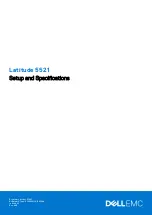
Industry Cellular Gateway
RIP Scenario
The Routing Information Protocol (RIP) is one of the
oldest distance-vector routing protocols, which
employs the hop count as a routing metric. RIP
prevents routing loops by implementing a limit on the
number of hops allowed in a path from the source to a
destination. The maximum number of hops allowed
for RIP is 15. This hop limit, however, also limits the
size of networks that RIP can support. A hop count of
16 is considered an infinite distance, in other words
the route is considered unreachable. RIP implements
the split horizon, route poisoning and hold-down
mechanisms to prevent incorrect routing information
from being propagated.
OSPF Scenario
Open Shortest Path First (OSPF) is a routing protocol
that uses link state routing algorithm. It is the most
widely used interior gateway protocol (IGP) in large
enterprise networks. It gathers link state information
from available routers and constructs a topology map
of the network. The topology is presented as a routing
table which routes datagrams based solely on the
destination IP address.
Network administrator can deploy OSPF gateway in
large enterprise network to get its routing table from
the enterprise backbone, and forward routing
information to other routers, which are no linked to
the enterprise backbone. Usually, an OSPF network is
subdivided into routing areas to simplify
administration and optimize traffic and resource
utilization.
As shown in the diagram, OSPF gateway gathers routing information from the backbone gateways in area 0,
and will forward its routing information to the routers in area 1 and area 2 which are not in the backbone.
130
















































